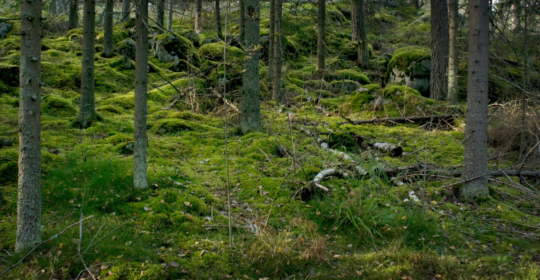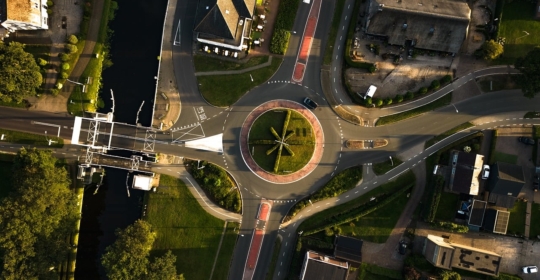
SBTN Pilot: UPM
Company:
UPM-Kymmene Corporation
UPM is one of 17 companies that participated in the target validation pilot which took place from May 2023 to June 2024. With only partial completion of the pilot due to challenges with data availability, UPM still found the SBTN process to be a valuable learning experience informing their other nature activities. This case study is part of a series about the findings from the pilot companies.
>>View the full pilot summary report
“UPM has a long history of enhancing biodiversity in forests, water systems, and the regions where it operates. We are a proponent of SBTN and extremely excited to be part of the expert network working together on methodologies to set science-based targets for nature, following SBTN methodologies. Natural resources need to be managed sustainably, and companies are at the forefront of halting biodiversity loss. Our actions and targets will be based on science.”
Context and motivation
UPM-Kymmene Corporation is a global biomaterials company with production plants in 11 countries, spanning sectors from forestry, pulp, wood, paper, and label products to biofuels, biochemicals, and biomedicals. Headquartered in Finland, UPM owns or leases over one million hectares of land in Finland, Uruguay, and the US. UPM provides a variety of solutions to decarbonise the economy by replacing fossil-based products with renewable ones.
The main raw material for UPM is wood, which also represents its most significant impact on biodiversity. UPM has been enhancing biodiversity in its forests for decades, having established its first biodiversity program in the 1990s. Since then, UPM has expanded its approach to include water courses and production plants, as well as integrating biodiversity indicators into the company’s financing and management remuneration.
UPM was motivated to take part in the pilot because the complexity of biodiversity meant it wanted to set global, uniform, comparable, and science-based targets for biodiversity. UPM sees the best results when diverse stakeholders and sources of expertise collaborate. Therefore, UPM joined the SBTN Corporate Engagement Program and later SBTN’s initial target validation pilot to learn from and to share knowledge with other organisations.
Actions taken
UPM included all business units and geographies in its initial materiality assessment (Step 1) and prioritisation (Step 2) but decided to focus target-setting (Step 3) on wood sourcing; management of its own forests and plantations in Finland, Uruguay, and the US; and water use in high-priority production units. This decision reflected UPM’s primary data availability for pressures, which had been gathered from direct operations and stakeholders, including public authorities and researchers. It is worth noting that UPM’s direct operations cover a large part of the value chain as they own and operate their own tree nurseries, forests and plantations, and pulp and paper mills, among other things. For the upstream assessment for commodities other than wood, the availability of primary data on both pressures and state of nature was more challenging.
They used the WWF Biodiversity Risk Filter to obtain state of nature data. UPM used the SBTN pilot to build internal capacity, conducting the entire pilot in-house without external consultants.
Findings
Given that wood is UPM’s main raw material, wood sourcing areas managed largely by UPM were identified as particularly important. For freshwater use in UPM’s direct operations, the biggest pulp and paper sites were prioritised. The SBTN methods provided an impetus for collaboration on data and tools designed to support conducting assessments and measuring local impacts. UPM found particular value in openly collaborating with the Finnish Environment Centre’s water experts to learn more about the significant data and tools they have, many of which are openly accessible.
UPM had an existing set of biodiversity targets, such as their own “Net Positive Impact Indicators” for forestry and various biological indices, for example, for benthic invertebrates in water environments. However, UPM is committed to continuous improvement and recognises the need to further develop its approach. SBTN offered UPM an opportunity to test and further refine its indicators. Within the timeframe and the pilot methodology, UPM decided not to set targets yet, but to continue its development and evaluation of possibilities to combine its own and SBTN’s approach.
Challenges
UPM found interpreting and validating the state of nature variables challenging. While tools with global coverage are available, the quality and granularity of the data constrain the work. Given the number of suppliers in different categories, gathering data on upstream pressures for commodities other than wood was a challenge. UPM is currently developing methods to gather carbon emissions data from suppliers more efficiently, which could assist with efforts to improve the collection of state of nature and pressure data.
UPM welcomed the option to use secondary data for upstream pressures where primary data was not available. UPM would like to understand better how SBTN aligns with certification schemes such as FSC in forestry.
UPM found there was some inconsistency in the results generated between the different basin-specific freshwater tools such as WWF’s Water Risk Filter and WRI’s Aqueduct and Water Footprint Network, for example with some suggesting very high or high water stress in a basin where others suggest low water scarcity or 0% blue water reduction need. This made it more difficult to prioritize some sites. UPM would have appreciated the opportunity to make greater use of the high quality of local flow and nutrient data and models offered by national authorities, but they were not always specifically suited to SBTN target-setting requirements, having been designed with national needs such as the EU Water Framework Directive in mind.1
1. SBTN’s basin threshold tool should help future users find local water models.
Benefits of process and next steps
Participating in the pilot allowed UPM to understand how it can expand its targets and reflect on its existing initiatives. As UPM sees it, SBTN has confirmed the importance of, and helped refine its ongoing efforts. This pilot has also helped UPM to identify new ways to monitor and verify their work’s real impact on nature and offers a positive boost to their credibility with customers, suppliers, and other stakeholders.
UPM is excited for what the future will bring for SBTN and is looking forward to what will come next including the upcoming SBTN basin threshold tool and further interoperability with other frameworks.
Advice for other companies
- Don’t try to solve everything at once; be prepared to focus on smaller areas or issues initially. It is a journey that starts with smaller steps.
- Ensure sufficient resources and a feasible schedule for the project. Don’t expect this to be a quick and easy exercise.
>> View the full pilot summary report
>> Learn more about setting science-based targets for nature



